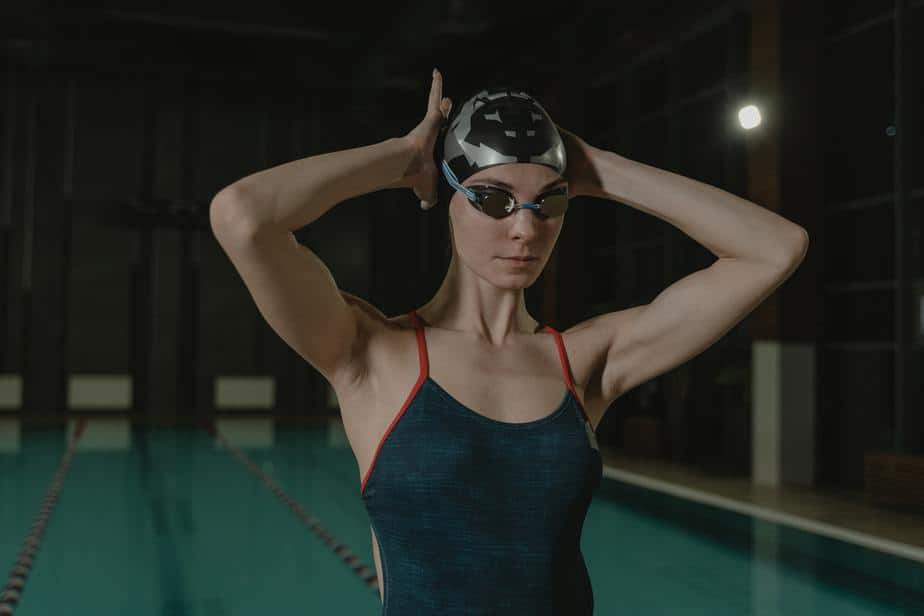Most people who head to the pool don’t think about what they need to bring. A swimsuit, towel, plenty of sunscreen if it’s an outdoor pool, these things are essential items at swimming pools and you didn’t need us to tell you to bring those.
However, due to special circumstances, some people may not have a swimsuit or one suitable for the pool. Furthermore, they may have simply forgotten it that day, lost it, or they do not wish to spend the money to get a new swimsuit because something happened to the old one (i.e. mold or chlorine damage).
What these people wonder is: why can’t I just wear regular shorts to the pool? In a similar vein: why can’t I just wear my workout clothes to the pool? There are many reasons why these clothing are not allowed at the pool, and why there is even a dress code for many public swimming pools.
Generally, the dress code at most swimming pools prohibit any clothing that is not swimwear. Even some swimwear might not be allowed, such as rash guards or board shorts, due to how loose and lengthy some of them are which can obstruct your movement and make it harder to stay afloat. Generally speaking, one piece, two piece swimsuits and swim trunks/Speedos are allowed. Since the pool is a family friendly environment, any swimwear that is too immodest (e.g. string bikinis) are also not allowed.
If you are unsure why this is the case for many swimming pools, in this article we will explain why a strict dress code is in place and enforced at most pools and why they are necessary in order to keep a swimming pool running in an orderly fashion.
What is the purpose of a dress code?

At its core, the purpose of a dress code is to ensure the safety of all pool goers, to keep the pool a family friendly environment, and also to ensure water quality remains high and that equipment functions properly. How exactly does one’s choice of swimwear affect these things? Let’s go through them one by one.
With regards to safety, improper swimwear such as regular clothes or workout clothes will absorb too much water. Most swimwear is made with nylon or lycra which are lightweight materials that are fast drying and do not absorb much water. Conversely, the materials that regular clothes are made of, particularly cotton, absorb water like nobody’s business which will weigh you down and obstruct your movement. The end result is a higher risk of drowning.
As an aside, some swimming pools may even ban rash guards, board shorts, and burkinis even though they are swimwear. The reason is that these swimwear are quite long and may become too restrictive/heavy when wet, which will make it harder for you to stay afloat and increase your chances of drowning similar to wearing non-swimwear clothing.
With regards to a family friendly environment, public swimming pools are not intended as a place for you to hook up or find a potential partner. There are families with young children there, so don’t treat it like it’s a club or a bar. Do not wear anything too revealing; use regular bikinis and Speedos as the litmus test of the most revealing things you can wear at the pool without getting kicked out.
Finally, clothing not designed for swimming can potentially decrease the water quality and damage the equipment. Any colored or dyed clothing that is not made for swimming can bleed, which affects the pool water’s chemistry and color. The materials used in clothing that aren’t swimwear will also break down and clog the pool filters. Wearing anything except swimwear will cause the pool water to quickly become filthy (even more than it already is, considering people love to pee in it).
What can and can’t you wear to public swimming pools?
Before we begin, understand that this is not necessarily an exhaustive list of what’s appropriate or inappropriate, nor is what is described in this section true of every swimming pool. If you are unsure of what’s allowed, please visit your swimming pool’s website, call them, or ask them in person what the rules are. There may be some slight differences depending on the swimming pool, so don’t take our word as law.
What you can wear

For most swimming pools, this is a guideline of what is considered appropriate swim attire:
- One piece swimsuits
- Two piece swimsuits (i.e. bikinis,tankinis)
- Swim trunks
- Swim briefs/Speedos
- Swim/surf shirts
- Swimming diapers
This list of swim attire should not be surprising and is a very standard requirement across all swimming pools. Essentially, as long as you’re wearing something that is designed for swimming (with a few exceptions), you are probably not running afoul of any dress codes.
What you can’t wear

Some swimming pools will ban some or all of the following:
- Regular clothing like shorts and T-shirts
- Workout clothing like compression shorts, yoga pants, sports bras, or leggings
- Burkinis/religious wear
- Board shorts
- Long sleeve rash guards
- Cover ups
The first two points on this list should not be surprising because any clothing that is not swimwear can cause major problems to one’s personal safety and can affect the pool water quality as outlined in one of the sections above.
That said, what is surprising is that some of the items on this list are also swimwear. These items are: board shorts, long sleeve rash guards, and burkinis. How come these are (sometimes) banned despite being designed to be worn in the water?
You’ll notice that these swimwear cover up more of your body than the others. This is ideal for UV protection, but the downside is that when soaked, they will be heavier and restrictive than other swimwear. Then you run into the same problems as wearing non-swimwear attire into the pool with regards to safety.
Some pools may still allow rash guards or board shorts to be worn, but if you’d like to err on the side of caution, you should stick with more conventional swimwear instead.
Parting words

At the end of the day, the dress code for public swimming pools isn’t particularly difficult to adhere to. Essentially, this entire article can be boiled down to a simple sentence: wear a proper bathing suit and don’t wear regular clothes to the pool.
That said, the people most likely to break these guidelines are people who don’t have a bathing suit anymore and want to wear something else. A common complaint people have is that their swimsuits disintegrate too quickly and they don’t want to keep spending money on a new one so quickly.
The solution, then, is not to find ways around the dress code so that you can wear something else, but rather to learn how to better take care of your swimsuits so that they can last a long time.
The best way to do that is to wash your swimsuit immediately after swimming to get rid of the chlorine, which can damage the swimsuit if left on too long. You must also be careful when drying it. Do not expose it to heat, which can cause it to shrink, and also do not dry it in direct sunlight, which can also damage the fabric.
If your concern is that you think swimsuits are too revealing in general, and you want to wear clothing that are more modest, then there are swimsuits for that too. You can wear a one piece swimsuit with swim shorts over it to cover more of your legs. You could also wear one piece shorts which are essentially one piece swimsuits that cover more of your legs.
Unfortunately, most swimming pools ban burkinis because they pose too much of a safety risk for the wearer, not due to any religious discrimination. You can still wear it at a beach though, but you do so at your own risk.
Hopefully you better understand why it is so important to wear proper swim attire when you are at the swimming pool. The dress code exist for a reason and that is to ensure your safety, to keep the pool a family friendly place, and to maintain good water quality. Whatever you do, don’t wear regular clothes to the pool!

